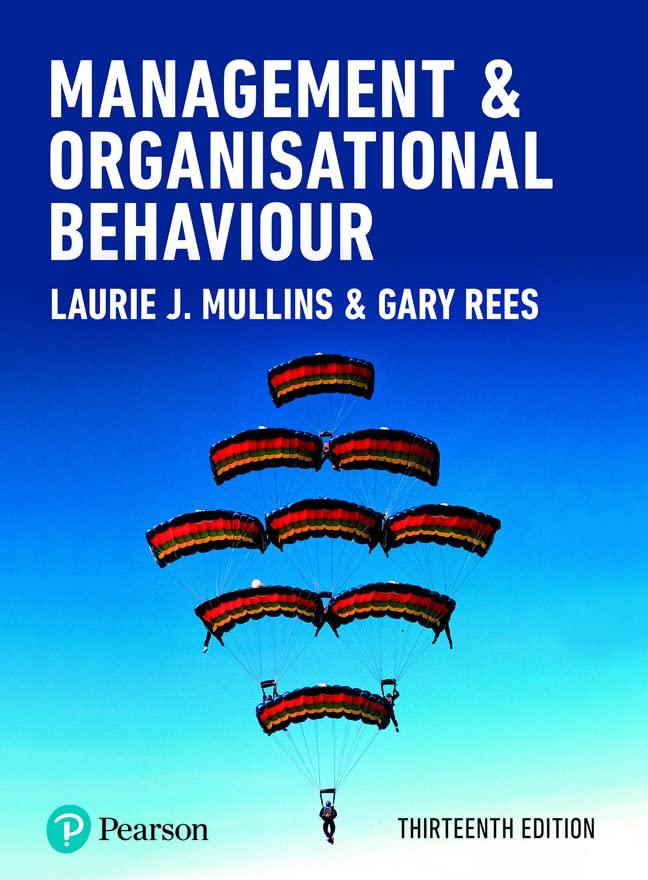Harriet Green told the Commission about her personal transformation toolkit, which she has used to overhaul a
Question:
Harriet Green told the Commission about her personal ‘transformation toolkit’, which she has used to overhaul a number of organisations on different continents, including Thomas Cook.
‘Driving transformation is a 24/7 job,’ she said.
‘Organisations are like living organisms and, when looking to transform them, you need to consider all elements, whilst addressing the most urgent priorities.’
The critical three elements are:
The psychology: how people think, feel and act – in other words, the organisation’s culture, values, ways of working and ‘the way we get things done round here’. The physiology: the systems and processes that underpin and connect the business, like nerve endings and blood flows.
And, finally, its anatomy: the organisational structure.
Businesses need to create a lean, agile structure as befits a digitally enabled business, supporting fast decision-making, and reducing the layers of management between the CEO and customers.
Harriet believes a CEO must lead change in all three areas to truly transform the organisation. An effective CEO today needs to operate at the centre of the vortex – not from the top of the pyramid in a historical, hierarchical construct – and has to gather information from all the organisation’s communities, both internal and external.
Organisations are like living organisms and, when looking to transform them, you need to consider all elements, whilst addressing the most urgent priorities.
Harriet described some of the key ‘tools’ in her personal leadership toolkit that are helping her to drive the ongoing turnaround at Thomas Cook.
Investigate the problem On her first day as CEO, Harriet sent a survey to everyone in the business asking what was wrong with it. In under a month, over 8,000 people had replied. Those at the frontline usually know what’s not working and have a passion for fixing it.
Be visible Communicate often, update the organisation regularly, and use different media, like video. Be available and reply quickly. Be visible, share honestly and celebrate success.
Be open Ensure you are open to feedback from employees. At Thomas Cook, Harriet developed an ‘Ask Harriet’ email address, so employees could email in confidence on any issue. At its peak, Harriet received 200 emails a day and prides herself on replying to everyone.
Identify talent Leaders need to identify their talented performers quickly. Engage with people across the organisation –
meet the key players in every area, know their direct reports, and meet with up and coming talent. Identify quickly those who are not ‘on the bus’ – make decisions quickly. When transforming an organisation, moving at pace is essential – don’t waste time trying to convert those managers and leaders who don't want to change and who make it clear that they will never support the new ways. Give everyone a fair chance to change but then take the tough decisions. Middle-management is often a big part of the problem – and also the solution.
By engaging and fostering belief at the top and the bottom of the organisation, those in the middle who might be slower to change begin to feel the squeeze and move forward positively.
Build a winning team Bringing in fresh talent, different industry experience and a different perspective is vitally important, as is identifying the skills and knowledge gaps early on. At Thomas Cook, Harriet personally recruited close to 80 people, believing that, when transforming the leadership of an organisation, the principle of ‘a third, a third and a third’ is usually the right balance: keep one-third of the original leadership team, promote one-third from within and bring in one-third to give fresh perspective and learnings from other industries, and then involve and engage them to work together as one aligned team.
Questions
1. Explain fully what you understand by transformational change. Give your own views on Harriet Green's 'transformation toolkit'.
2. To what extent do you believe sending a survey to everyone in the business is ordinarily likely to produce constructive and meaningful feedback? How well do you think this would work in your own university?
3. What particular problems do you foresee in attempting to 'create a strong code of conduct and involve the whole organisation'?
Step by Step Answer:

Management And Organisational Behaviour
ISBN: 9781292422381
13th Edition
Authors: Laurie Mullins, Gary Rees





